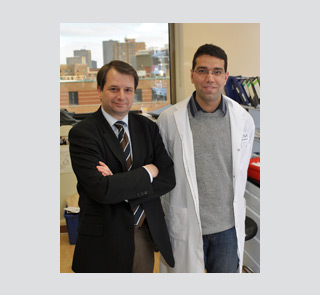
Patients suffering from leukemia and other blood diseases are possibly subjected to a therapy that includes transplantation of blood stem cells. Leukemia patients are provided blood stem cells that may start over the entire blood producing system and all its blood cells, including white cells, red cells and platelets. Prior to transplantation, leukemia patients are supposedly treated with chemotherapy wherein their entire blood forming system is destroyed along with the ailment. These blood stem cells can possibly be harvested from the patient before chemotherapy, and given back after the treatment so they can rebuild blood cells.
Dr. Cyrus Khandanpour, medical doctor, postdoctoral fellow and the study’s first author, added, “However, this therapy still fails in about 10% to 20% of cases. Among other reasons, these patients die because the transplanted stem cells do not generate new blood cells quickly enough, which leads to infection and death. We have found a protein (called Gfi1b) that seems to regulate the stem cells’ activity level and where they reside in the bone. In our mouse model, we were able to turn off the gene coding for Gfi1b. When we did this, the stem cells became activated, started expanding drastically, left their bone marrow niche and entered the bloodstream without losing their function. The ability to manipulate blood stem cells in this manner would significantly increase the efficiency of stem cell therapy.â€
A major demerit of this therapy may be that blood stem cells usually dwell in a niche between the bone and surrounding cells, and are in a dormant state. For obtaining accurate number of stem cells, scientists have to probably mobilize them from their bone marrow niche. Mobilization seems to help cells enter the bloodstream where they can be quickly gathered.
Experts assume that another way of giving the therapy is by harvesting blood stem cells from a healthy donor and providing them to a patient following the chemotherapy treatment. Further investigations will be commenced for examining the exact molecular mechanisms gained after the ablation of Gfi1b. Researchers will be investigating the way Gfi1b controls location and activation of blood stem cells.
The research was published in the journal Blood.

